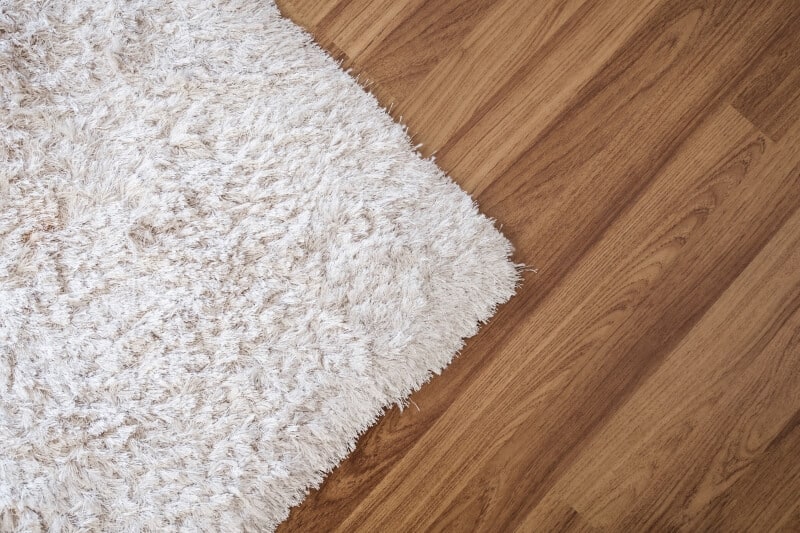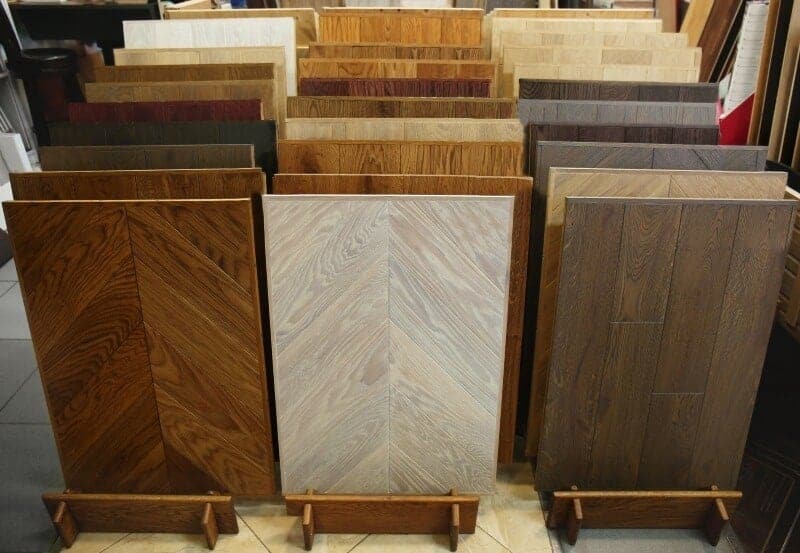Hardwood flooring vs. laminate: Which floor is better?
The floor covering plays an important role in interior design. Both the appearance and the practical features should match the function of the respective room. There is a wide range of options to choose from. parquet and laminate are particularly convincing because of the large selection of surface designs.
While parquet is made of real wood, laminate is made of plastics.
The surface can be deceptively similar to real wood.
However, laminate is also available in many other design variants, so that it can be used to imitate a tiled floor, for example.
But which floor covering is the right one when it comes to living spaces and wet rooms? Is parquet or laminate flooring better suited for furnishing business premises? For the decision “parquet or laminate” it is important to know the differences and special properties as precisely as possible.
What is laminate made of? Interesting facts about material and production of laminate
Laminate, the short name for laminate flooring, is a composite material based on plastic.
These are thermosetting plastics, i.e. plastics that cannot be deformed after curing.
Several layers make a resistant floor covering. The decor can be designed in almost any desired look. Laminate flooring with a wood look is a frequent occurrence.
The top layer is a protective layer consisting of a thin paper soaked with a melamine adhesive.
Underneath is the decorative paper that gives the laminate its appearance.
The lower layers are applied to a carrier plate and firmly bonded.
The carrier board is a particle board, either MDF (Medium Density Fibreboard) or HDF (High Density Fibreboard).
The bottom layer is a backing layer of paper or plastic to prevent deformation.
The thickness of a finished laminate board depends on the number of layers and the thickness of the carrier board.
Laminate floors are available in different qualities. Basically, laminate is versatile.
In order to find the right laminate for a particular application, it is helpful to divide the material into load classes.
The higher the load class, the more resilient the laminate flooring is.
Laminate or hardwood flooring: the main differences
The main difference between laminate and parquet is the basic material.
Laminate is made of plastic, while parquet is always made of pure wood.
This distinction has an impact on the usage properties.
Parquet is – besides many other good properties – extremely durable.
High-quality laminate also has a long service life. However, if a laminate floor is replaced, the question of disposal arises.
While wood poses no problems, plastics are difficult to dispose of. Anyone wanting to buy laminate or parquet should also think about sustainability and disposal.
The decision to use laminate as a floor covering can still be the right one. The durability of a high-quality laminate floor with a high stress class makes the flooring ideal for commercial areas.
Cheaper laminate variants are the optimal choice for furnishing a rental apartment.
What advantages does parquet have over laminate?
Parquet is sustainable and durable.
This advantage is particularly evident in the fact that a parquet floor can be renovated very well.
Scratches and dents in the laminate flooring are permanent, parquet forgives damage with its good renovability.
Even after prolonged use with visible signs of wear, a parquet floor can be sanded down and resealed or oiled, which is not possible with laminate.
Anyone who attaches great importance to an authentic look will make a decision with a parquet floor:
Traces of use do not necessarily have to be disturbing, but they do give the real wood flooring character.
Wood has a warm appearance. Laminate can imitate this effect purely optically, but the floor itself is cold.
Parquet on the other hand always feels pleasant. A parquet floor is warm to the feet. A floor covering made of real wood has a positive effect on the room atmosphere.
The indoor climate clearly benefits when the floor is made of pure wood. Oiled parquet floors in particular can even absorb odours from the room air due to their breathable surface.
Wood is a renewable resource. With parquet that comes from sustainable forestry, every builder makes a significant contribution to the protection of the environment.
Moreover, wood is unique. It is possible to imitate a special grain in a laminate floor. In a direct comparison parquet or laminate, however, wood as an original cuts better off.
Parquet or laminate flooring: For which applications is laminate better?
Laminate flooring is very suitable if the rental apartment is to be given a new floor covering.
The good value for money speaks for itself, because laminate is cheaper than parquet.
The prices for parquet are higher, but the quality also speaks for this.
Laying laminate is quick and easy – do-it-yourselfers also get on well with laminate.
Laminate is, however, not suitable for damp rooms, e.g. the bathroom or laundry room. Moisture causes laminate irreversible deformation.
Laminate is well suited for heavily used areas in commercial properties. The hard-wearing floor covering fits in department stores and smaller shops, in hotels and restaurants.
Laminate flooring also makes sense in offices and administrative buildings as well as in social facilities, for example in a day-care centre for children or a retirement home. However, especially in offices, both parquet and laminate should be protected with an office chair underlay.
For which areas should you choose parquet instead of laminate?
Whether parquet or laminate makes more sense depends on the area of application, but also on your own expectations.
Parquet has a noble aura. A parquet floor is of high quality, and accordingly it is also very effective in demanding areas.
In the house and in the apartment parquet is suitable for all areas. Parquet flooring not only fits in the living room, bedroom and children’s room, but also in the kitchen and can even be laid in the bathroom. A floor made of real wood is a perfect match for a healthy lifestyle.
Anyone who has planks laid can count on a high-quality, sustainable floor covering.
In commercial areas, parquet is always the right choice when it is a elevated ambience.
The small, fine boutique, the cosy café or the elegant lounge area of a hotel receive a pleasant and harmonious overall effect with a high-quality parquet floor.
Parquet flooring also makes an excellent impression in a law firm, in a stylish office or on the executive floor.
The differences in laying: How to lay parquet or laminate
For the laying of hardwood flooring the skills of a specialist are required.
For parquet there are options, it can be glued with parquet adhesive or laid as a floating installation.
This alternative does not exist for laminate, where a floating installation is always necessary. Laminate works hard and must be exposed. The advantage is the quick installation, the disadvantage is the higher impact sound.
What is better suited for underfloor heating, parquet or laminate?
For underfloor heating, a glued floor is much better due to the higher heat transmission.
Since laminate must not be glued, parquet is the right choice for underfloor heating.
Table of Contents




